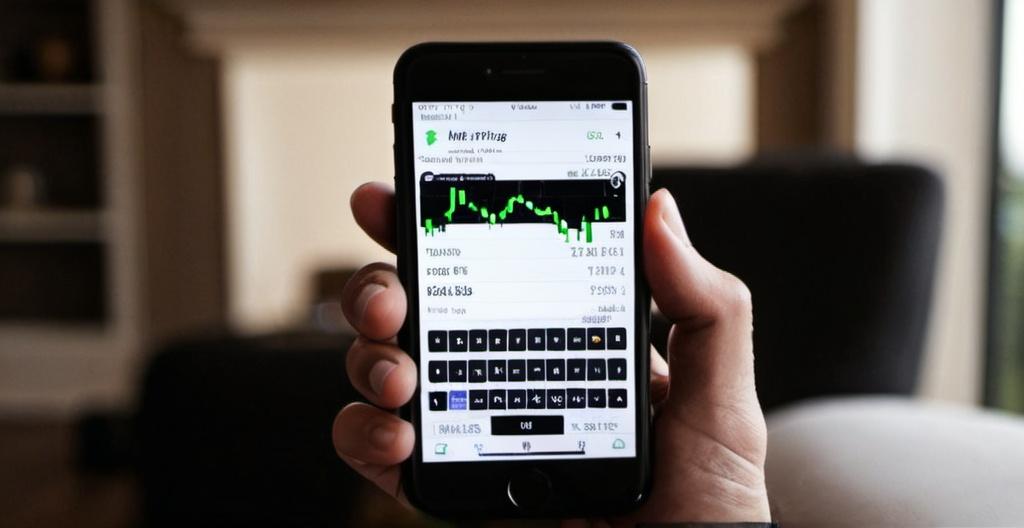Most traders who dip into crypto stick to the usual suspects—Bitcoin, Ethereum, maybe a few high-cap altcoins. But underneath the headlines, there’s a more active, more volatile space forming: DeFi tokens. These are the assets tied to decentralized finance protocols—think lending, staking, derivatives, and liquidity platforms. They aren’t just crypto assets—they’re event-driven, highly responsive, and often, thinly traded. And that’s exactly what short-term traders want.
While the average investor waits for “adoption,” short-term traders are already rotating between token unlocks, governance votes, flash loan exploits, and liquidity cycles. The structure of these tokens—combined with their on-chain visibility and unpredictable catalysts—creates windows of volatility that classic assets can’t offer.
As an expert from DayTrading.com puts it:
“DeFi tokens aren’t just another asset class—they’re a flashpoint for intraday volatility. The liquidity cliffs around token unlocks and protocol events create trading windows you won’t find in BTC or ETH. Short-term traders who treat them like an extension of their crypto toolkit are the ones seeing real edge.”

Not Just Volatile—Event-Driven and Reactive
DeFi tokens don’t move just because Bitcoin is up. They move when a protocol adds new staking rewards, launches a V2, passes a vote, or has a governance conflict. This means that their price action isn’t purely technical—it’s reactive to real-time on-chain events, tweets, Discord leaks, or even a DAO treasury vote. If you’re watching closely, the setup doesn’t just come from the chart—it comes from information flow.
This is where short-term traders outperform. They’re not looking for conviction—they’re looking for catalysts. And in the DeFi space, those can drop with almost no warning.
The Liquidity Cliff Makes Entries Count
One of the defining features of DeFi tokens is irregular liquidity. A token might trade actively for 48 hours around an airdrop or announcement, then go completely flat for days. Intraday traders who understand volume flow and order book depth use that to their advantage—getting in early, riding the volatility wave, and scaling out before the order books dry up.
Unlike BTC or ETH, you don’t have deep market support at all times. Slippage can be brutal. That’s a risk—but it’s also what creates asymmetric returns for fast, size-sensitive trades. It rewards accuracy and punishes passivity.
Token Unlocks: A Calendar for Price Imbalance
Almost every major DeFi token has some version of a vesting schedule or token unlock calendar. These moments can flood the market with supply—and cause pre-emptive dumping, or post-unlock rebounds. Traders who know how to read the unlock dynamics can time their trades around these events with surprising accuracy.
Some tokens drop 20% the week before a major unlock. Others rally after the sell pressure clears. Either way, these moments offer trade setups rooted in predictable mechanics. It’s less about prediction and more about knowing where pressure is likely to build—and how sentiment will react to it.
Protocols and Governance as Trade Signals
Unlike centralized assets, DeFi tokens are tied to protocols with visible on-chain activity and transparent governance. That’s a goldmine for informed intraday traders. If a protocol announces a sudden change in emissions, adds liquidity incentives, or shifts its treasury allocation, price responds fast—sometimes before the public even processes what the change means.
Traders who track these DAO discussions or follow whale wallets can front-run the reaction. It’s not manipulation—it’s information flow. And in a market where transparency is public but processing is delayed, there’s real alpha in being early.
Why Long-Term Holding in DeFi Is Riskier Than Trading It
The big risk in DeFi isn’t just price—it’s protocol risk. Bugs, exploits, exit scams, and unstable governance can blow up a token in hours. That makes long-term holding a fragile play, especially if you’re not actively monitoring the protocol. For short-term traders, the limited exposure window is a feature—not a flaw. They don’t need the protocol to succeed forever—they just need the token to move cleanly for 2-12 hours.
Even well-intentioned protocols can break, get outvoted by whales, or suffer from yield dilution. DeFi isn’t buy-and-hold friendly unless you’re deeply immersed in every protocol you touch. For most traders, it makes more sense to treat these tokens like volatile trades—not core positions.
Conclusion: DeFi Is Built for the Short-Term Trader
DeFi tokens are fast-moving, thinly regulated, and tied to platforms that evolve in real time. That makes them unpredictable for investors—but ideal for traders. The price action is sharper, the catalysts are more frequent, and the edge lies not in conviction but in timing. For traders who know how to read volume, watch wallets, and stay plugged into the noise, DeFi offers a playground that’s still underexploited.
It’s not about betting on the next protocol to “change finance.” It’s about finding volatility, trading it with structure, and moving on before the music stops.
That’s how smart intraday traders use DeFi—and that’s why this layer of crypto still belongs to them.
This article was last updated on: July 17, 2025
